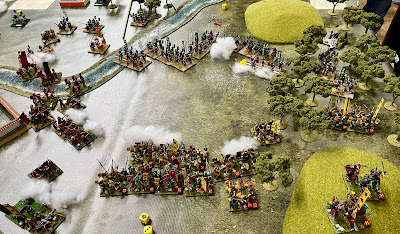This is a new Osprey Combat series book by Murray Dahm on the Dacian Wars AD 85-106. The Dacian Wars are one of my favourite ancient campaigns, and I have just returned from Romania, the Dacians' modern-day home.
I am generally not a fan of this Osprey series. This is the third book from Osprey that covers the Dacians, and there are similar MAA titles on the Romans of the period. The primary selling point for this series might be wargamers who want enough information in one title to organise the armies and understand the campaigns. That said, Murray Dahm is an excellent ancient historian, and this is a well-researched book full of the latest evidence.
After a short introduction to the region and the opposing armies, Dahm gets straight into the organisation of both armies. It's not the same level of detail as in the MAA series, but it's enough to get the wargamer started. Some nice colour plates help, along with plenty of illustrations. The written sources are, as ever, limited, but we do have Trajan's column, which by Roman standards is a reasonably balanced depiction of the troops and the challenges the Romans faced. The column is still in Rome, but the plaster casts in the National History Museum, Bucharest, are a much better opportunity to study them. Here are a couple from my recent visit.


The Imperial Romans are pretty straightforward, but our sources on the Dacians don't always correspond to the depictions on Trajan's column. In any case, Dacian society seems to have consisted of various tribes under individual rulers who owed allegiance to an overall king. So, there may have been several variations, including the Dacian allies, of which the Sarmatians are a favourite. The archaeology is challenging as the Dacian forts were in the Carpathian Mountains, dense, hilly terrain, even today. On my first visit, the hotel insisted I take an armed escort as the forests I was walking through still had wolves and bears. One controversy concerns how many Dacian warriors used the distinctive falx. The subject of a fine colour plate in the book. The otherwise excellent Warlord plastics box doesn't have nearly enough.
The rest of the book covers the three Roman campaigns. Most descriptions focus on Trajan's campaigns and omit the earlier campaign by Domitian in AD 86. He was defeated at the First Battle of Tapae, and although he recovered to win the second, he couldn't subdue the Dacians. A plus for this book is that Dahm covers the earlier campaigns.
In Trajan's First Dacian War (101–102 AD), he led a massive Roman force into Dacia, seeking to subdue King Decebalus. After several battles, including another critical clash at Tapae, Decebalus was forced to accept peace terms, becoming a client king of Rome. In the Second Dacian War (105–106 AD), Decebalus's continued resistance to Roman control prompted Trajan to launch a second campaign. This time, the Romans captured the Dacian capital, Sarmizegetusa, and Decebalus took his own life rather than surrender. Dacia was then annexed as a Roman province, bringing great wealth, particularly in gold, into the empire.
The final chapters give a good analysis of the effectiveness of both armies and the aftermath. The usual picture of Roman conquests is one of inevitable victory: the combination of auxiliary forces that provided the necessary skill in archery, light infantry and cavalry expertise, combined with the heavy-infantry prowess of the legions. Analysis of the campaigns against Dacia by Domitian and Trajan reveals that such a picture is false. Roman armies could be defeated, and imperial victories sometimes needed to be hard-fought and were by no means predetermined. Oltean surmises that Trajan’s Dacian expeditions were the "costliest war Romans ever fought, the war involving the highest number of troops and covering the largest area."
This is an excellent starting point if you are new to the Dacian Wars. However, if you have the other Ospreys, there might not be enough new material to justify the purchase.
I have the Dacians and the Romans in 28mm. However, more recently, I have played several games using Strength and Honour in 2mm, which gives a different perspective on the Tapae battles.

































